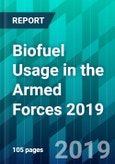Although biofuels are mainly used to replace or supplement the traditional petroleum-based transportation fuels, they can also be deployed to generate heat and electricity. Being an alternative to fossils, biofuels can be applied to existing vehicles with little or no engine modification. Although they release CO2 when burned in internal combustion engines, they differ from fossil fuels partly because their use reduces the net emission of carbon dioxide and other gases associated with global climate change and partly because they are biodegradable.
Biofuels have had a long history of use in the transport sector. This began in the 1970s and early 1980s when a substantial increase in biofuels production and use in many countries resulted from high oil prices. But biofuels became less competitive vis-à-vis fossil fuels after the collapse of oil prices in the mid-1980s, and global interest in biofuels for transport waned considerably in the 1990s and the first years of the 21st century.
The recent sustained increase in international oil prices has once again highlighted the potential for biofuels to contribute to transport fuel demand, particularly in countries that import the bulk of fossil fuel supplies. Global concerns about the effects of fossil fuel use on the environment, as well as recognition of the benefits of energy supply diversification also support increasing biofuels production and use.
With the recent focus on shortage of fuels in the near future and the rising cost of petroleum, the U.S. armed forces have shifted focus on biofuels. Biofuels are being used to fuel jets, navy ships, and many other modes of transportation for the armed forces.
The author brings a research report on the Biofuel Usage in the Armed Forces 2019. The report is a complete analysis of how the armed forces have shifted focus from petroleum to biofuels. Case studies illustrate how the use of biofuels is benefitting the armed forces. Be it the army or the navy, biofuels have become the new buzz word in the U.S. armed forces. An analysis of the leading industry players completes this analysis on Biofuel Usage in the Armed Forces.
Table of Contents
Section 1: Understanding Biofuels
Companies Mentioned
- Advanced Biofuels USA
- Amyris
- BioJet Corporation
- ClearFuels Technology
- PetroAlgae
- Renewable Energy Group
- Sapphire Energy
- Virent








